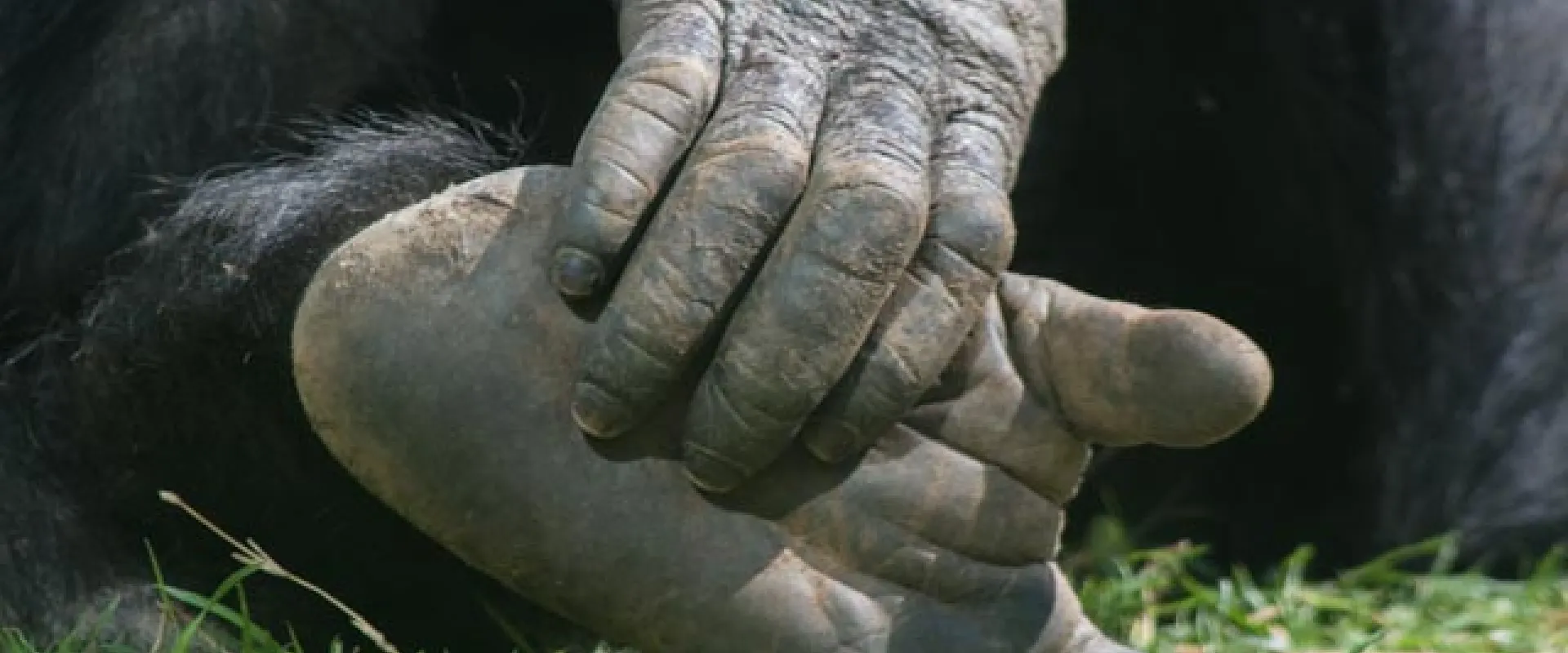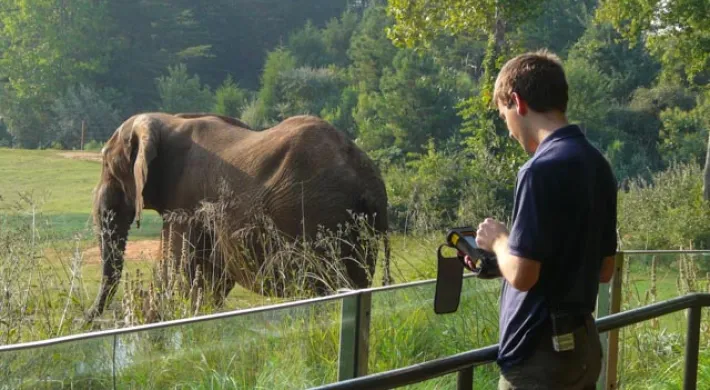Learning How our Close Relatives Move
When watching chimps and gorillas you may have noticed that they walk on their knuckles rather than the palms of their hands. While walking on their knuckles they keep their long fingers, which are needed for grasping and climbing tree branches, tucked into their hands. This type of movement, called knuckle-walking, allows them to easily move both in the trees and on the ground. While humans don’t knuckle walk, we, along with chimpanzees and gorillas, are the only animals that hit the ground with their heel first when they are moving. These special adaptations are important for understanding ape behavior and anatomy, as well as how humans and apes evolved. However, little is known about how these postures change over an individual’s lifespan.
Postdoctoral researcher Angel Zeininger of Duke University has been studying the North Carolina Zoo’s chimpanzee and gorilla troops, including four young chimpanzees and three young gorillas, in order to shed more light on how their posture and movement develop and what those developments mean for the evolution of knuckle-walking. The study will also offer insights into African apes’ ability to move in a variety of different habitats, as well as to determine critical periods in an ape’s locomotive development when changes occur. This information will help us to better understand the habitat needs of chimpanzees and gorillas, both in the wild and in zoos.



